Sorry, Nuclear War Simulator and Hydrofoil Generation, this was meant to be a 3×3. Unfortunately, I made the mistake of trying Reentry, an engrossing Early Access sim that does for pre-Space Shuttle NASA spacecraft what DCS World does for fast jets, first, and somehow a day I’d set aside for auditioning three titles ended up monopolised by just one.
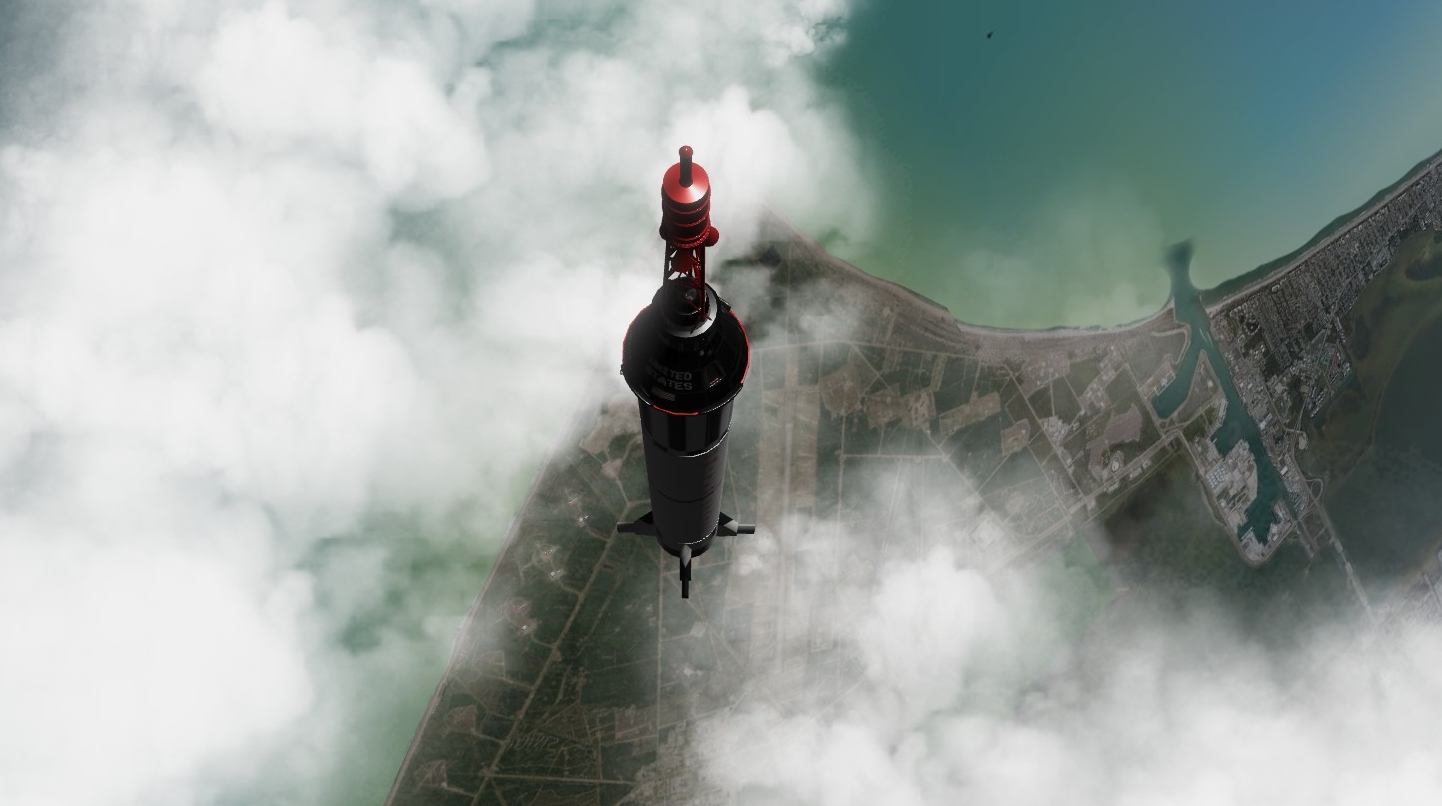
Although the £25 Reentry refuses to simplify the history-making rocket toppers it democratises*, it wisely cuts to the chase where training is concerned. Courtesy of a host of efficient, easy-to-follow tutorials, newcomers participate in their first launch and complete their first orbit within an hour of getting underway, and get to experience a re-entry and a splashdown before the Steam refund window closes.
* Adjustable realism settings are few
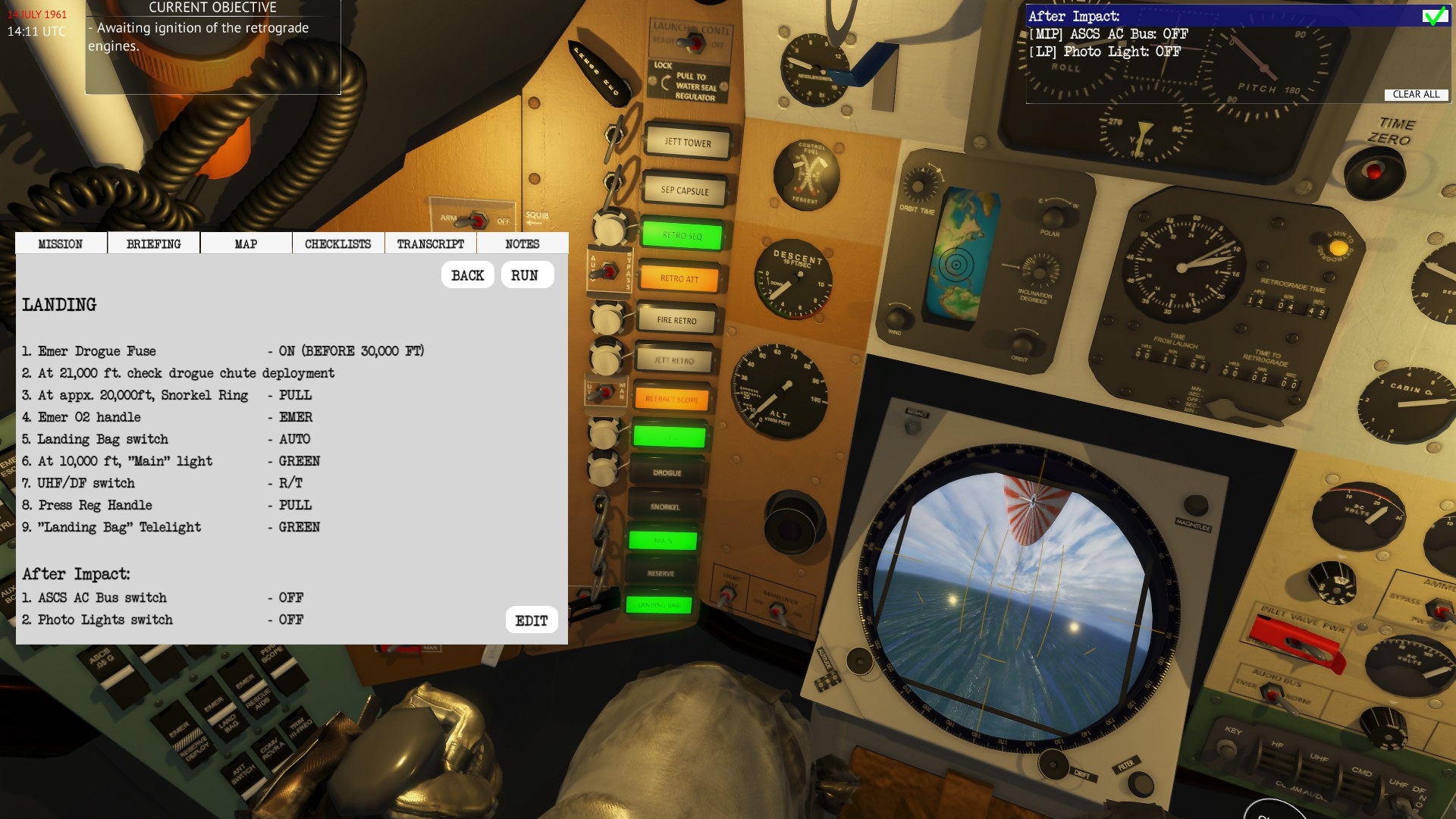
Whether you’re a novice or an old hand, there’s no avoiding the rituals that regiment almost every aspect of astronauting. Each stage of a mission has its own checklist which needs to be carefully worked through in order to keep chaos at bay. Flick switch ‘A’, monitor gauge ‘B’, turn knob ‘C’, twist handle ‘D’… the routines could, I suppose, be considered repetitive – boring even – if executing them didn’t strengthen the bond between you and your craft, and bring within touching distance the silver-suited frontiersmen who, sixty years ago, enacted identical rituals.
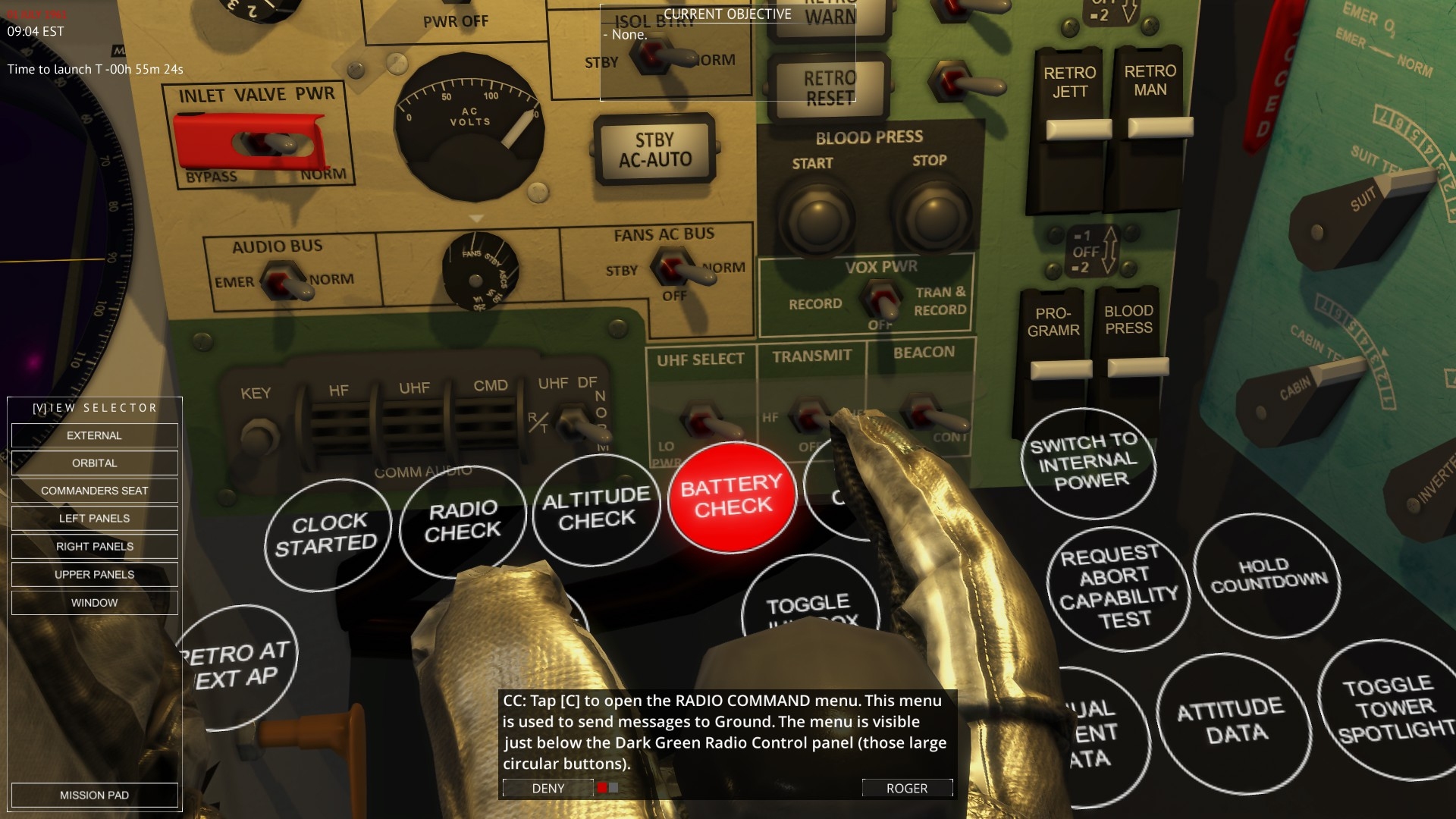
An active pause and a handy “Attend to this switch/knob next” highlighter ensure the clipboard chores rarely confuse or overwhelm. In the brief Mercury missions at least, although you’re kept busy, the workload is seldom so burdensome that you can’t sit back and savour the sensations, or sit forward and admire the view, now and again.
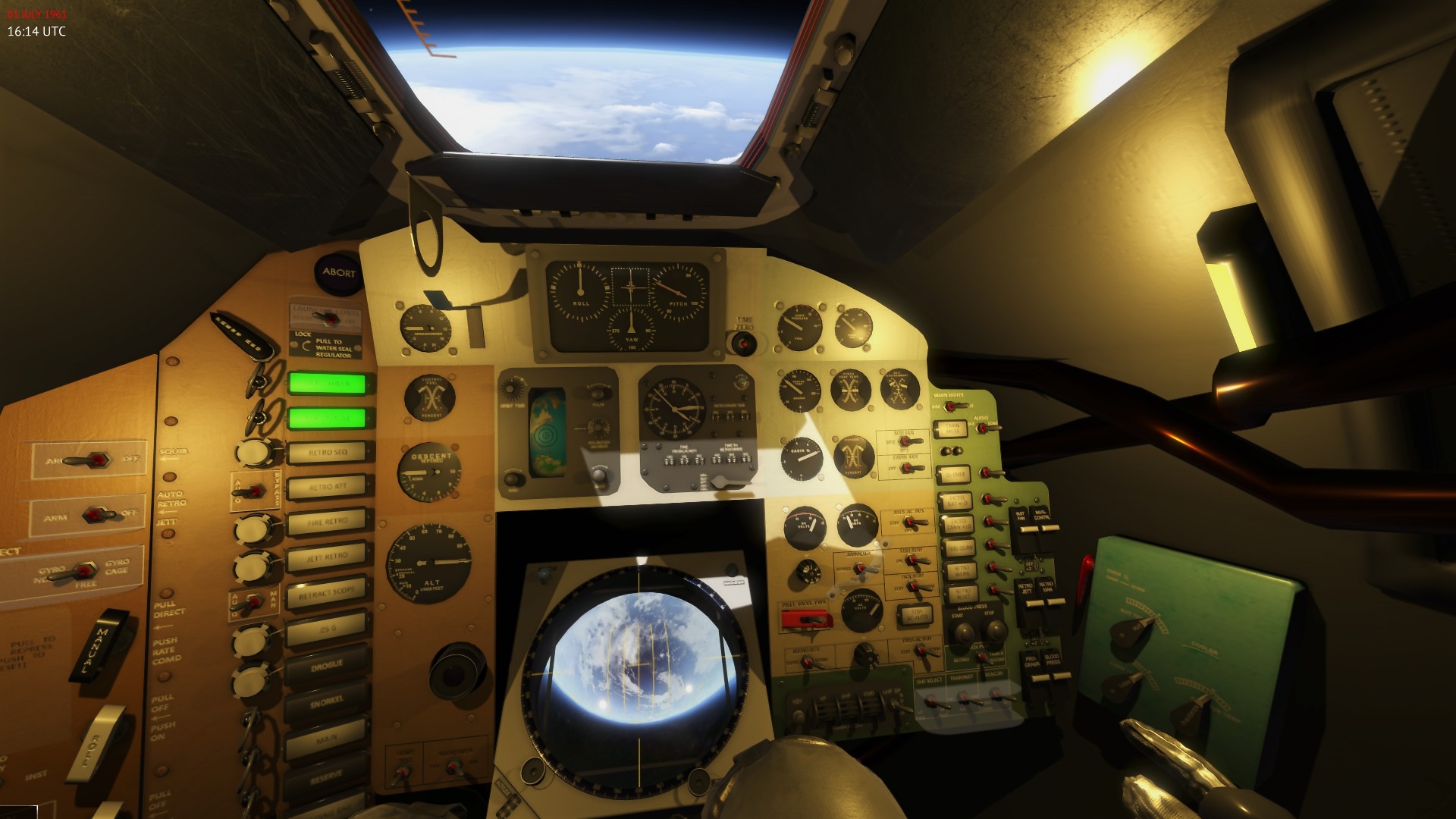
Thanks to decent low-spec friendly* visuals, a fairly obliging camera, and a soundscape that blends cabin noises, period audio, and music very nicely, the Reentry user gets to sample the emotion of pioneering space flights as well as confront the formidable intellectual and hand-eye challenges that men like Glenn and Grissom faced.
* Reentry runs surprisingly well on my museum piece.
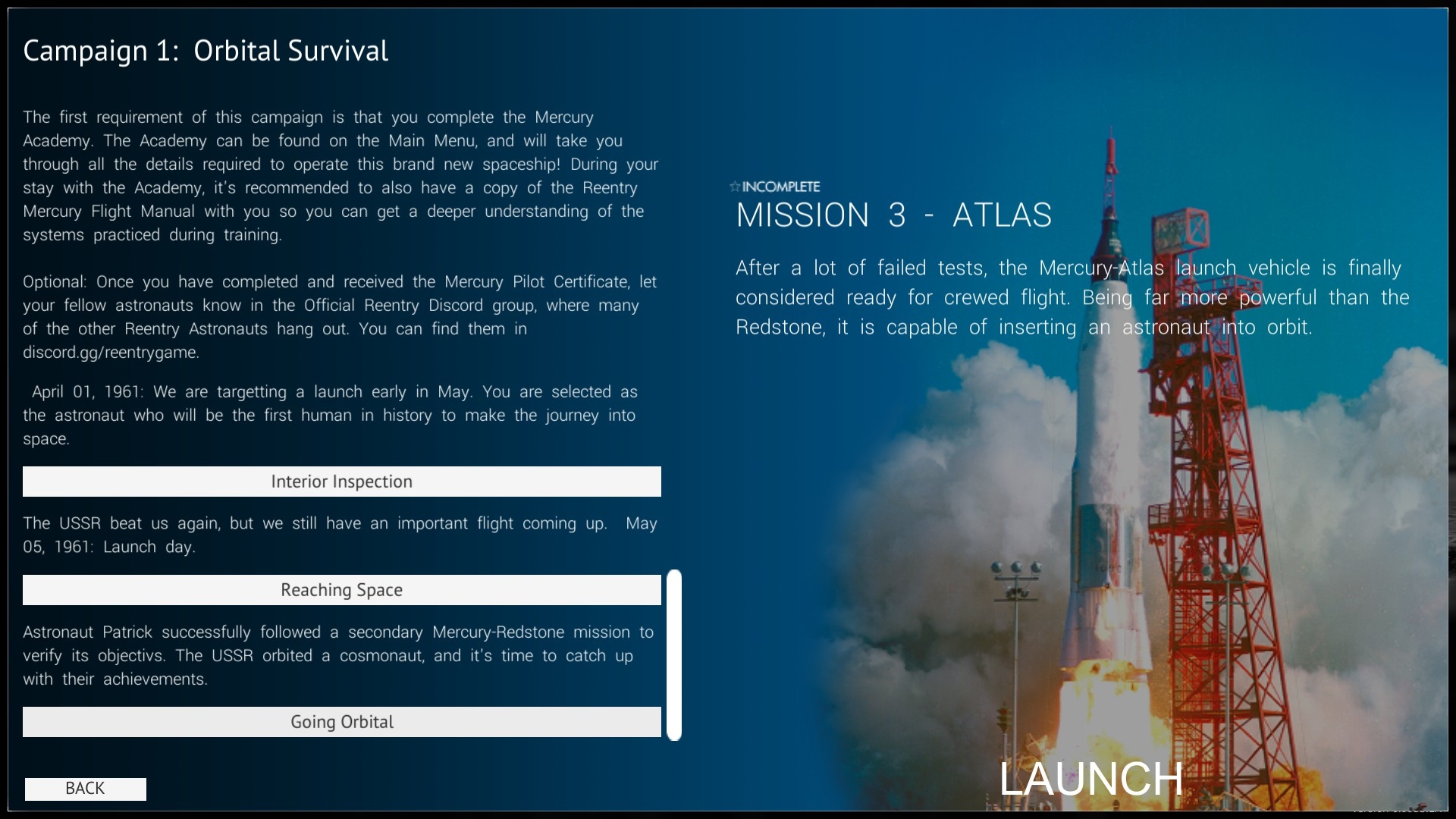
According to my latest Steam achievement, I’m now – unlike over two thirds of Reentry users – a ‘Certified Mercury Pilot’. The sim appears not to have noticed that my last campaign mission ended with me reaching for the quit button because, try as I might, I couldn’t persuade my giant metal pear to cease tumbling. In terms of panel complexity, the Mercury capsule is the simplest of the sim’s three orbital steeds. However, due to a sophisticated multi-mode attitude control system reliant on easily discombobulated gyros and easily disorientated horizon scanners, I feel I’m still a long way from mastering it.
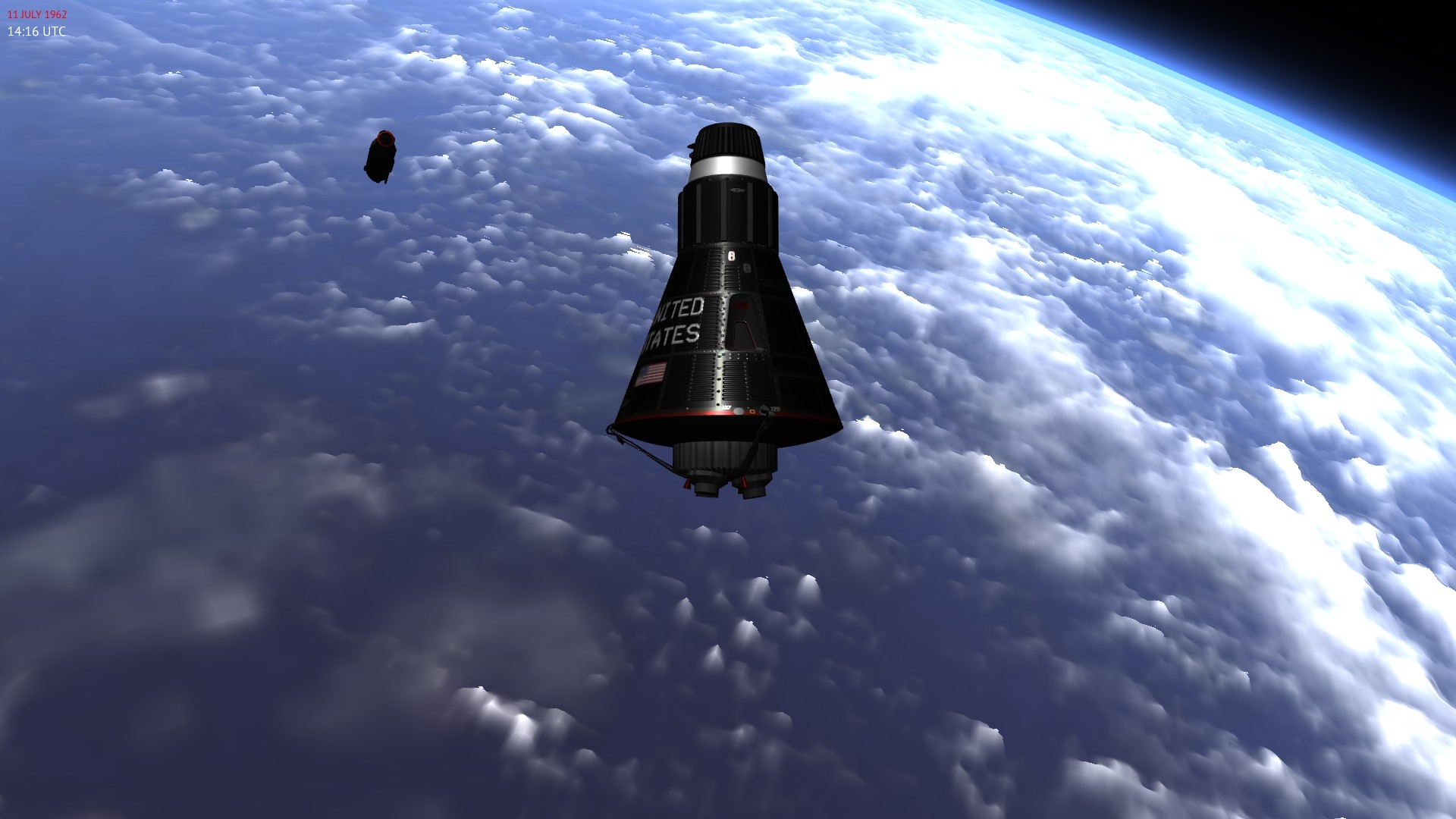
Of course, that’s probably how it should be. Even Alan Shepard who’d spent hundreds of hours in NASA’s simulator prior to Mercury-Redstone 3 struggled a bit the first time he attempted to manoeuvre without the aid of his craft’s Automatic Stabilization Control System. I suspect if I replay the ASCS tutorial enough times, and keep practising, I’ll eventually work out what I’m doing wrong.
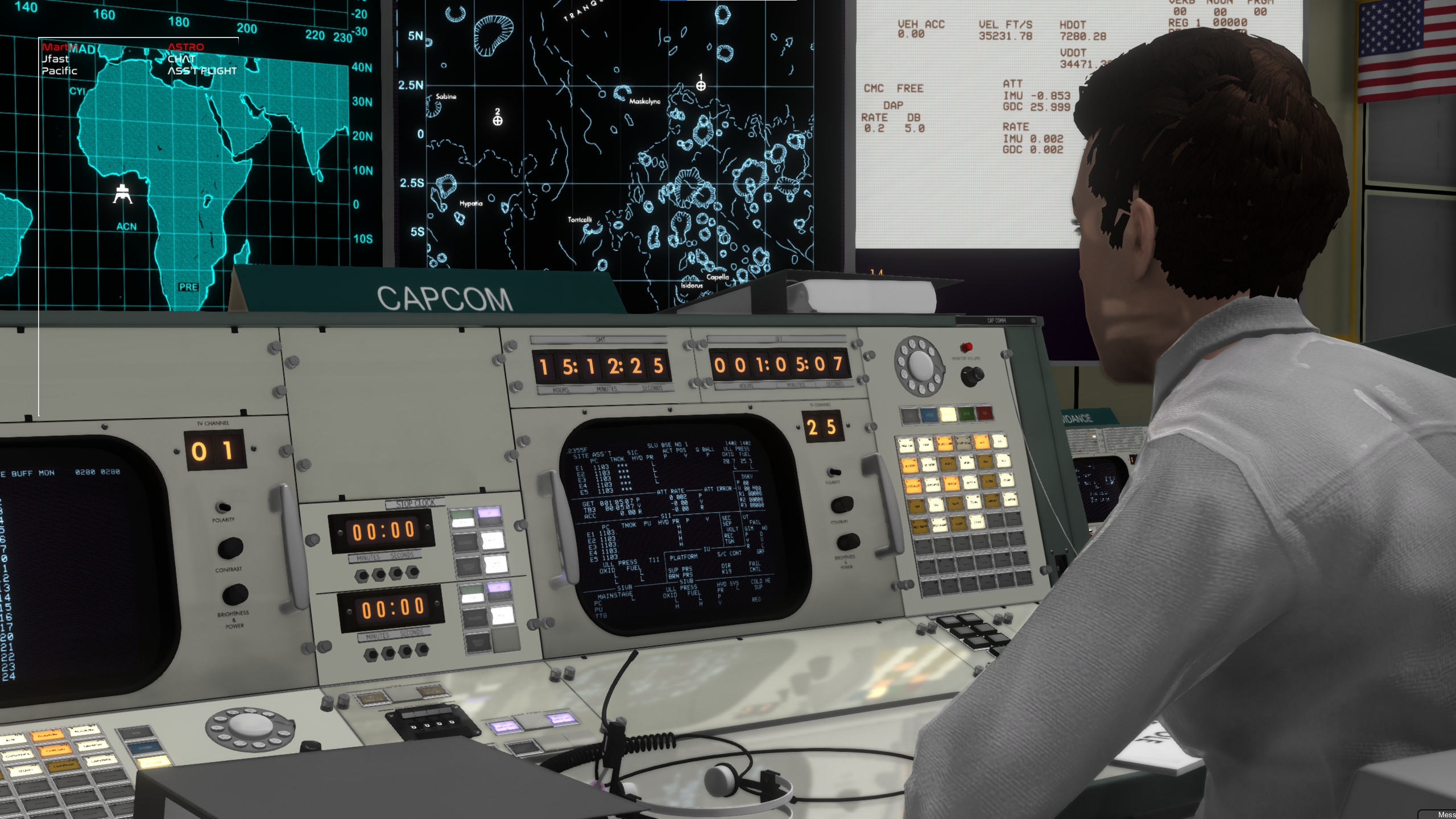
In a perfect world I’d request advice from CAPCOM, or jab Alt + A and watch the computer sort out my mess, but those options aren’t available.
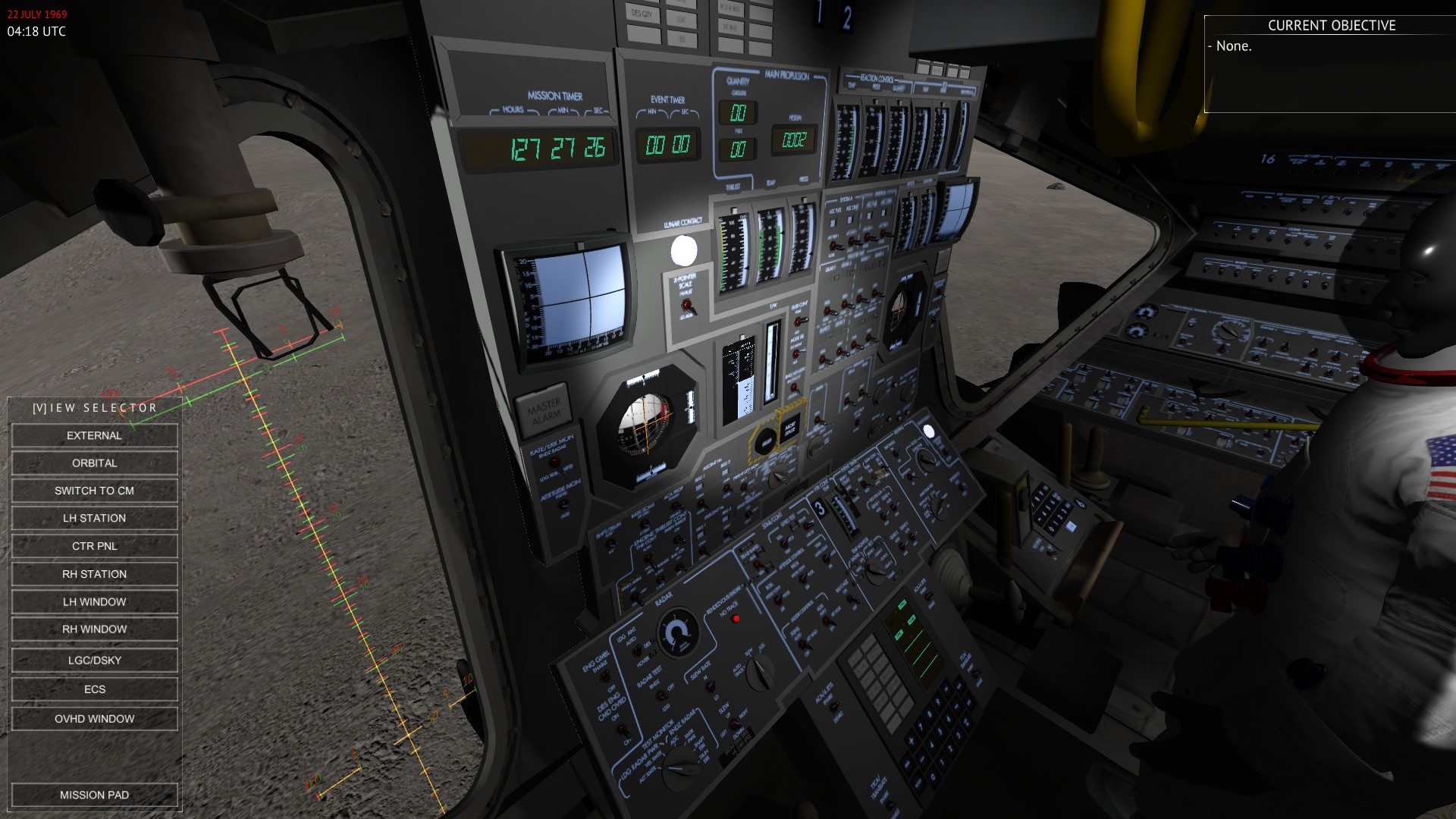
Dilettantes and habitual corner cutters will probably find Reentry frustrating. Late in my playtest, curiosity and a desire for a lunar screenshot overcame common sense. Ignoring the relevant tutorials, I jumped straight into a moonwalk scenario. Twenty minutes later, incarcerated in the lander by ignorance and inexperience (consulting checklists didn’t help) I reluctantly admitted defeat. Instinct and experimentation might sometimes open doors and start engines in other study sims, here however they tend to get you nowhere.
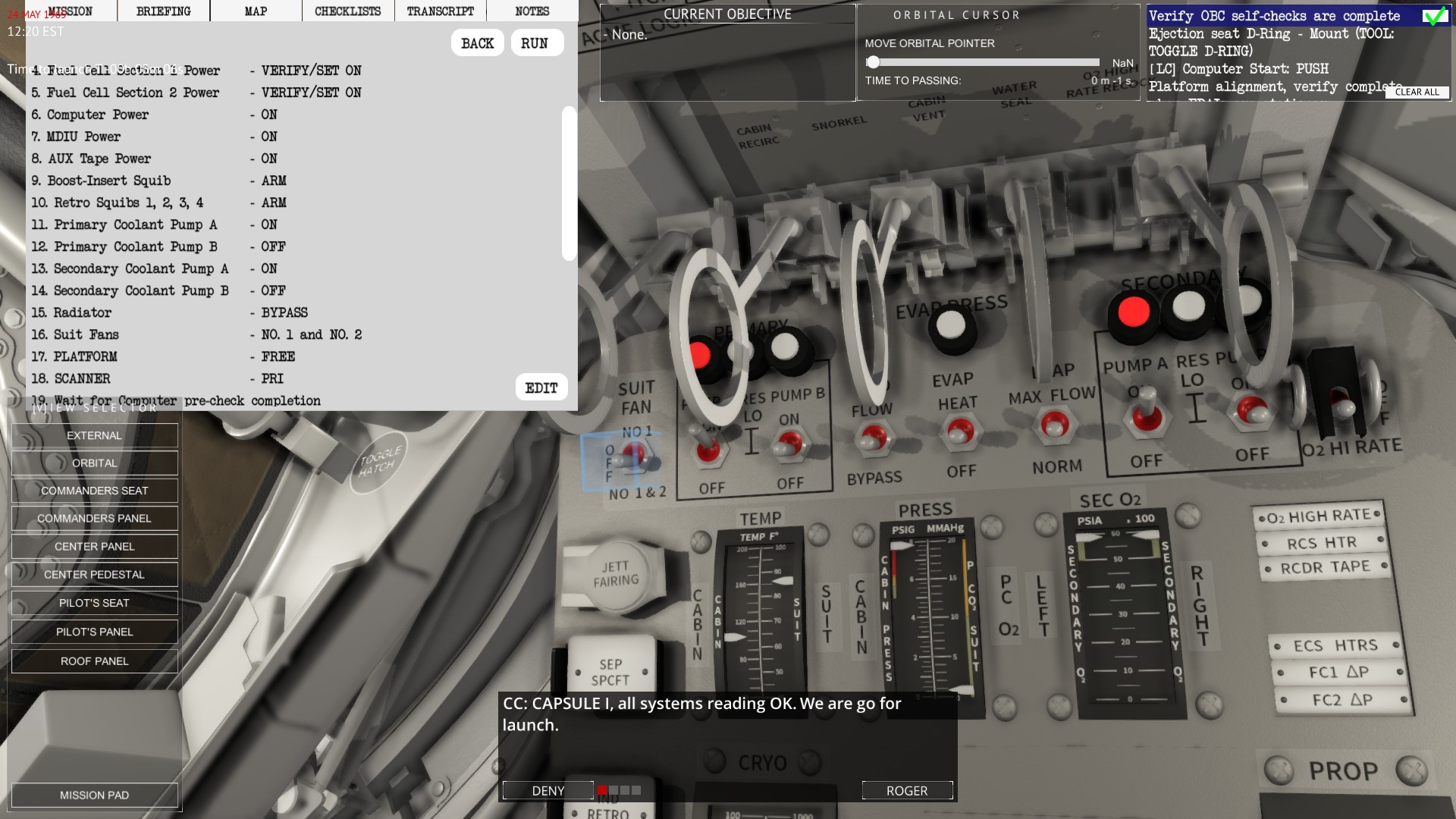
Assuming you approach Reentry the same way you’d approach one of the denser DCS modules – assuming you come prepared to pay attention, persevere, maybe even take notes – then a long happy relationship is, I reckon, almost inevitable. A less generous dev would have built a base game around Project Mercury, then delivered Gemini and Apollo content via payware add-ons. Petri, however, seems to prioritise punter contentment over personal enrichment. His uncommonly happy* customers can moonshot, moonwalk, and moontrundle without extra expense. And amazingly, after four and a half years of regular free updates, further substantial additions prior to v1.00 are by no means out of the question.
* A 96% “Overwhelmingly Positive” Steam review rating is almost unheard of.
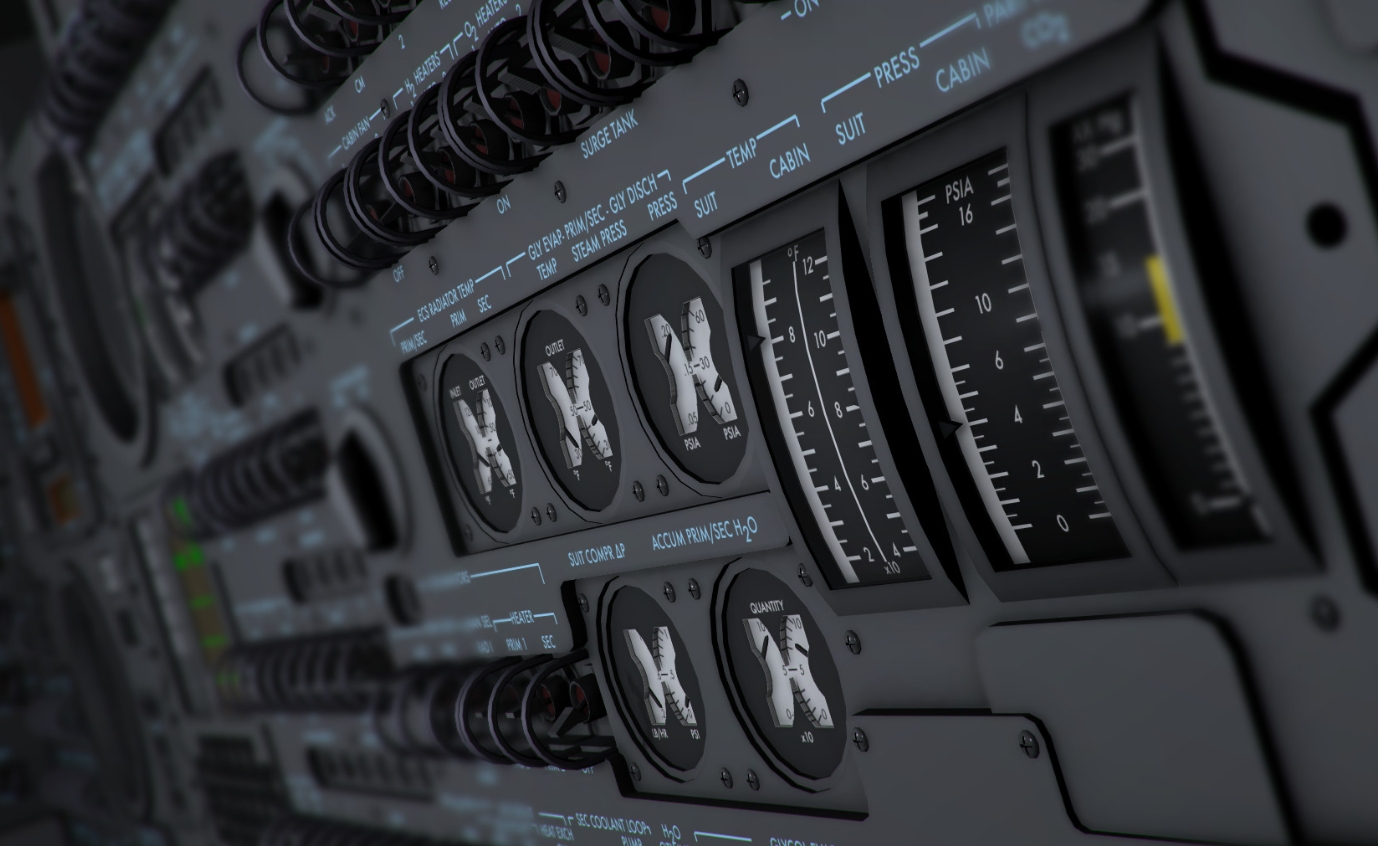
I hope there will come a time when I’m sufficiently comfortable with at least one of the flyables to undertake a mission with ‘random failures’ selected*. Up to this point all of my disasters have stemmed from my own clumsiness and/or ignorance. Obviously, anyone after meaningful historical insights… total immersion… must be willing to grapple with unscripted technical gremlins.
* Failures can be manually triggered by the player, randomly generated, or scripted by scenario authors.
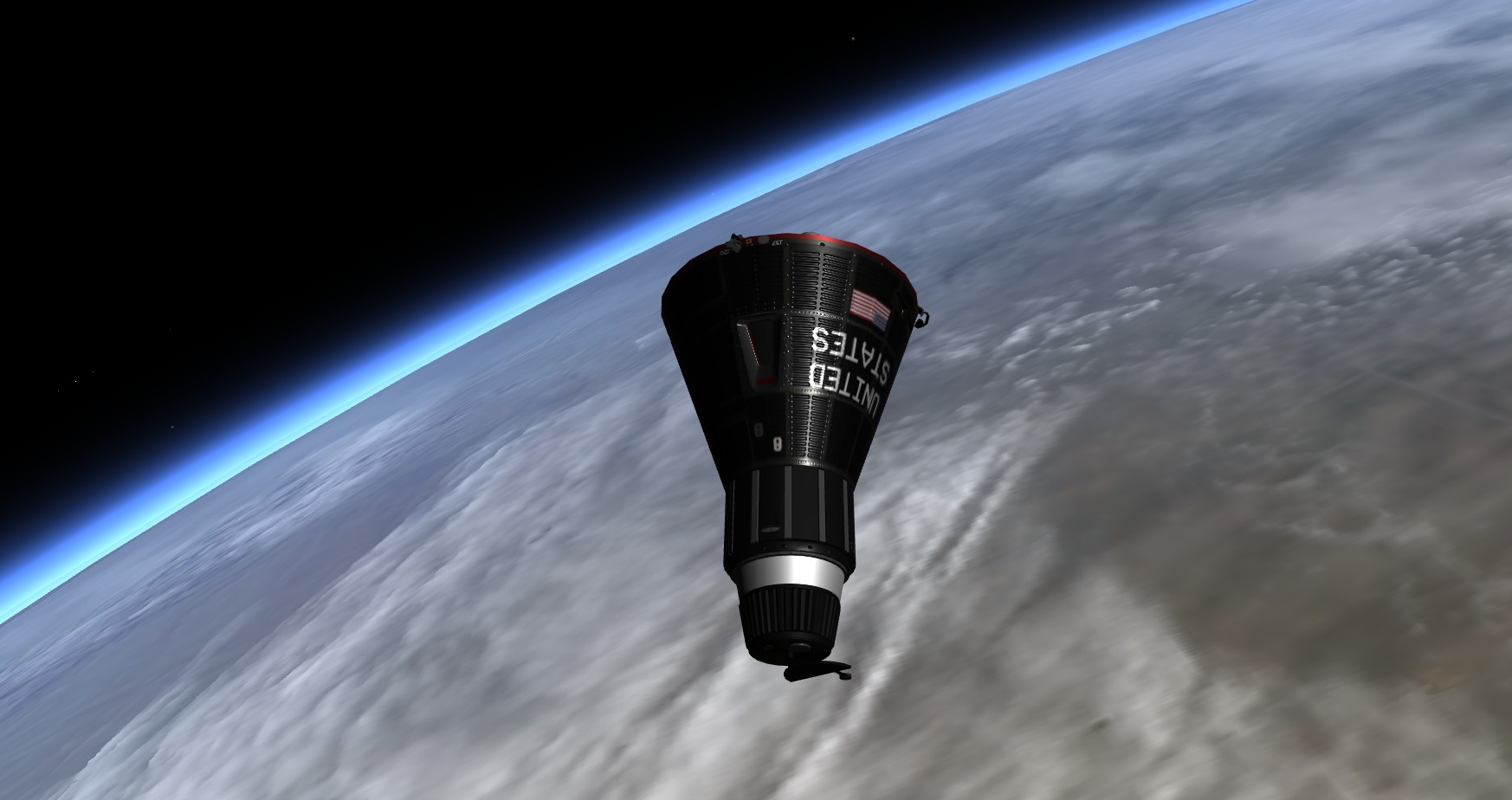
The thought that one day I could be so intimate with a Reentry steed that no combination of audible alarms, glowing warning lights, and awry gauge needles it could produce would faze me, is a tantalising one. If you’re going to spend weeks forging a deep friendship with a facsimile of a real-life vehicle then choosing a vehicle that encapsulated the first astronaut or put the first men on the Moon seems to me an excellent choice.

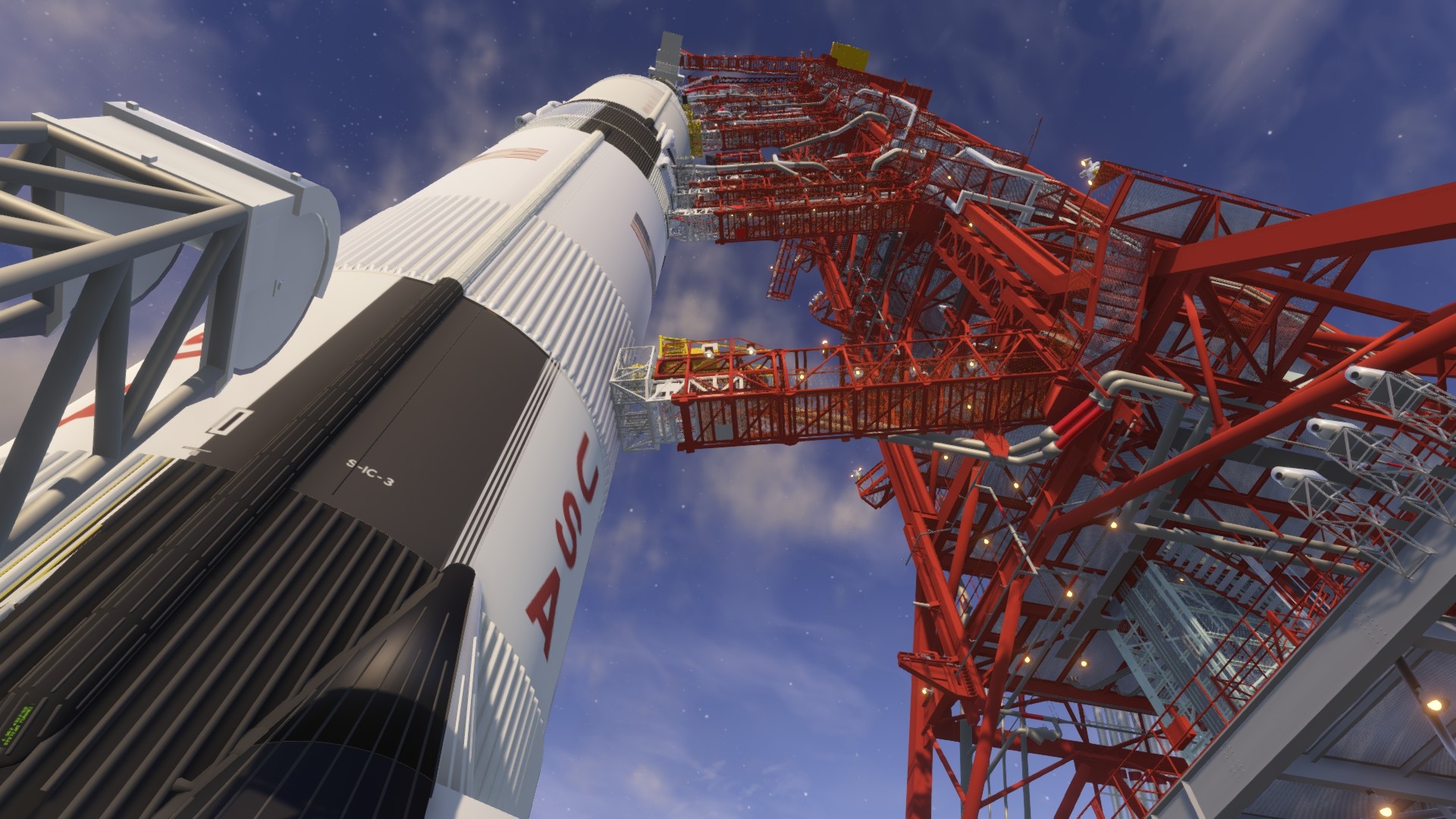
Looks like there’s a VR branch to the game – which the dev is intent on rebuilding in a newer version of Unity at some stage.
I know what I’m going to be doing in my magic goggles this weekend then!
My Steam account tells me I’ve played Re-entry for 19.3 hours, but that definitely doesn’t cover the dozens of hours I’ve spent reading all of the (publicly available) documentation on the Mercury capsule and procedures. After my first failed suborbital mission, where I failed to perform the maneuvering jet operations in time, I went back to the books to figure out exactly how to pull it off inside the 2-minute window.
I’ve got to say my absolute favorite moment comes in either scenario 4 or 5 of the Mercury campaign. No spoilers, but it’s well worth getting to that moment.
I’ve tried somewhat successfully to move from that onto the Gemini missions, but it takes a ton of learning time, and this go around there’s even more time-critical moments where you need to know your switch positioning cold.
Which is to say, I really love the game, but I can also understand why it’s not particularly hospitable to newcomers, even in the almost-fully-automated Mercury missions.
I know exactly that Mercury moment you’re talking about! I realized afterwards that it’s based on real events, which seems crazy these days.
I’m overjoyed to see the criminally-underrated and underpublicized Reentry (which I first learned of on Flare Path) getting some attention. As you encapsulate so well it’s a near-perfect simulation of those noble early space steeds. Also runs extraordinarily well on high-end rigs, including VR support.